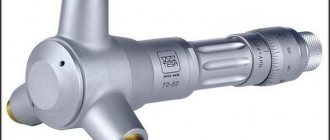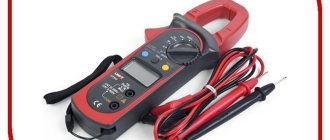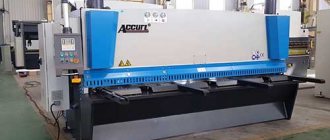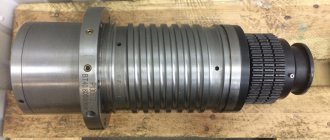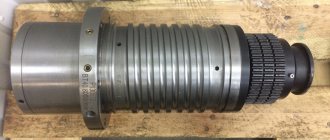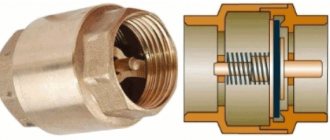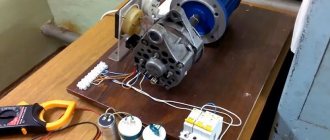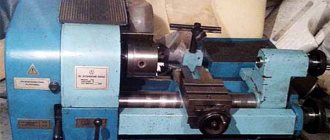Brushes for electrical machines: simple technology and universal application
Electric brushes are special electrically conductive parts of a current collecting device that are used to supply current to the commutators and slip rings of electric rotating machines.
Electric brushes are often used in DC electric machines, the switching conditions of which are quite difficult and there is a tendency to operate under a pronounced uneven load. Electric brushes are often used in small-sized universal motors with a high number of revolutions, as well as in crane motors. EG electric brushes are simply irreplaceable in auxiliary electric machines of railway rolling stock.
Electrographite brushes EG are made from a special mixture of graphite, carbon black and the necessary binders. The technology itself is relatively simple; upon completion, the electric brushes are fired. Electric brushes are mainly composed of ordinary graphite and the necessary binding materials. Often, EG electric brushes find their application in various DC electric machines, in high-power current generators, in welding-type generators, single-phase and multiphase commutator motors, as well as universal commutator motors, in rolling machine systems, tools and electrical household appliances for various purposes.
Electrographite electric brushes EG are subjected to special heat treatment in specialized furnaces at high temperatures (up to 2500 C). Electric brushes can be marked as follows: EG4, EG8, EG2a, etc.
The procedure itself, in which EG electric brushes are subjected to high-temperature thermal treatment, is called graphitization.
It is possible to purchase EG electric brushes of the required markings - the product range always allows customers to find exactly what they need. All products offered by the company have supplier certificates and are widely used in various areas of industry and everyday life, and their cost will certainly pleasantly surprise you.
Brushes are classified depending on the materials used and the characteristics of the technological process. They are divided into three groups:
Replacing motor brushes
There are several signs that can help you determine that your washing machine needs new graphite rods:
- The washing machine's electric motor suddenly stopped working. If during operation of the washing machine there were no mechanical impacts on it and there were no sudden voltage drops, then most likely the brushes in the motor were worn out.
- The appearance of crackling and noise during operation of the machine. In this case, it is most likely that the springs are already rubbing against the rotor of the washer, since the brushes of the electric motor have completely worn out.
- The car's electric motor has lost power. This can be determined during the spin cycle. At this moment, the machine cannot gain the necessary speed and the laundry ends up remaining wet.
- The washer smells of burning and burning wires.
- The corresponding error code appears on the device display.
It should be noted that if malfunctions occur in the operation of the machine, it is best to contact a service center for help. After all, the above symptoms can occur not only when the electric motor brushes fail.
Instructions for making electric brushes for a Makita hammer drill
As you know, the main source of a hammer drill is brushes. It is important to monitor their condition and the cleanliness of the collector. Makita 2450 and 2470 rotary hammers use carbon brushes CB-419 art. 191962-4. Factory carbon brushes are recommended to be replaced after 80 hours of operation. Both brushes must be replaced, regardless of the degree of wear.
Signs of brush wear
Do not confuse the usual small sparking that is present when working with partial sparks jumping around in a circle; this is acceptable under load and the brushes of a new tool have not yet gotten used to it.
The first signs of brush wear are strong sparking and extraneous sound. Stop working immediately!
Timely replacement of carbon brushes prevents failure of more expensive parts of the hammer drill.
The cost of a set of carbon brushes is not comparable to the cost of the rotor or stator of any power tool. You should not save on little, so as not to lose more.
The conclusion is simple: change your carbon brushes more often. Do not forget that if one brush malfunctions, the other should be changed automatically.
The critical length of the carbon brushes of a Makita rotary hammer cannot be less than 8 mm
When replacing, it is worth taking a closer look at the armature and what the output of the collector is. If there is a noticeable depression, the commutator should be ground to a smooth state; if this is not done, even the original new brushes will spark, which will lead to even greater burnout of the commutator.
After installing new brushes, be sure to let them grind in at idle speed without load for at least 10 minutes.
Set of new carbon brushes Makita 2450 and 2470
The procedure for performing work on the production of carbon brushes from other brushes
Carbon brushes can be purchased at almost any power tool store. But there are times when there is no store nearby, but you need to work.
There is a solution: you need to make brushes yourself from brushes from other power tools. An important point is the selection of an electric brush that is similar in its characteristics.
An incorrectly selected carbon rod will result in severe sparking or armature wear.
Option for homemade carbon brushes for the Makita 2470 rotary hammer
The manufacturing process of carbon brushes for a Makita rotary hammer
The work begins with the preparatory stage. It is necessary to select the correct cross-section of the carbon rod blank. Here are the dimensions of the factory carbon brushes CB-419A in mm (6x9x12). The selected carbon rods must have a cross-section larger or the same size as those used in Makita rotary hammers.
If you have selected workpieces of a larger cross-section, they are filed with needle files or sandpaper. But you can use a fairly simple device.
A special device called a “fungus” is clamped into an electric drill. Almost every master has this device. It is used in the process of grinding surfaces.
What criteria are used to choose brushes?
Based on the current GOST 12232−89, according to which the industry produces brushes installed in an electric motor, you can select the required product.
To choose them correctly you need to know the parameters:
- The material from which the contact is made (brand of brush).
- Dimensions: depth, width, length. Moreover, the length may have slight differences in the direction of increasing or decreasing.
- Part execution (configuration or type). They determine the version - with a conductor or not, where it should be attached, what material it is made of and what type of tip for connection should be (ring or “plug”, etc.).
This information is presented in the relevant reference books on engines or markings of their components. Below, as a sample, only a small part of the table is presented. According to this information, graphite brushes are selected according to size and output conductors.
Explanation of markings
Domestic marking of brushes for electric motors includes complete information about the product, for example:
EG-14 20*32*40 K1-3
The brush marking will look like this:
- EG-14 - the material from which the brush is made;
- 20*32*40 - dimensions;
- K1-3 - configuration (determined from the table).
At the same time, there is additional information in the reference books, which indicates the parameters for each type of brush.
According to the information on purpose and dimensions in the reference books, you can select brushes for power tools that use a commutator motor. It should be taken into account that their markings are different.
For a rotary hammer, drill, mixer and grinder there can be either the same or different brands of brushes, since these devices have different loads and speeds. This must be taken into account when replacing, and not selected only by size.
If the engine has special design features, you can specify the required parameters when ordering:
- The number of current-carrying conductors, as well as their length and cross-section.
- Configuration of connection contact and lining.
Often, power tool manufacturers provide a table of brands or catalog numbers, which displays information about which brush is suitable for which device. Below is a compliance table for power tools, which indicates the type of tool and the marking of the installed brushes.
The following two tables will help you select components for Bosch power tool motors. The top column shows the types of brushes marked by numbers (#1, #2, #3 ... #15) and their catalog numbers; vertical columns indicate the models of power tools and also their numbers.
When selecting, you need to have an idea of the difference between carbon brushes and graphite and other types of electric brushes. Incorrectly selected components can lead to failure of the commutator, and the electric motor will quickly become unusable, or simply the newly installed parts will quickly wear out.
Now you know what markings exist for motor brushes and how to choose the right electric brushes for the right tool. We hope the information provided was useful and interesting for you!
Source: samelectrik.ru
Causes of malfunctions and replacements
The role of brushes in an electric motor is undeniable. Therefore, it is advisable to minimize the influence of factors that lead to their malfunction.
In particular, the danger is caused by the phenomenon of sparking brushes. It manifests itself for the following reasons:
- Carbon deposits and dirt on the collector. It needs to be cleaned using a fine sandpaper.
- Accumulation of graphite dust or copper powder causing shorted contacts. It is advisable to quickly remove all jumpers using a knife or other sharp part.
- If the contacts differ in resistance level, or the brushes are incorrectly selected according to the main parameters, then this can cause sparking. In this case, you will need to replace the brushes for electric motors yourself or contact a service center.
- Complete resource depletion. This will also require replacing the brushes.
- Short circuit in the interturn section of the armature windings - to correct the situation, it is necessary to check the operability of the armature and change it if necessary.
Features of selection
When planning a purchase, you should study in detail how to choose brushes for an electric motor. If the installed brushes are worn out, then it is advisable to determine their main parameters, which will help in the future to correctly replace the devices. Geometric shapes, size, and grade of graphite are also important.
If you choose graphite brushes, keep in mind that they can be hard or soft. At the same time, the copper on the collector also differs in hardness. When you choose mismatched options, one of the elements will fail faster due to high friction and wear.
Brushes also differ in the level of active resistance
This is important to know for calculating winding parameters and PRU characteristics. The brush assembly must work in harmony
Therefore, it is necessary to take into account the features of the clamping block, the characteristics of the guides and contact groups.
Reliability of operation depends on the degree of pressure. If the pressure is excessive, the commutator and brush block may overheat, and if the pressure is insufficient, sparking may occur.
The photo of brushes for electric motors shows their different modifications. However, not all of them can be used in specific conditions. For example, it is not recommended to install generator modifications of copper-graphite products in power tools. Excessive overheating and high currents will lead to problems with the performance of the windings.
Metal-graphite brushes
Metal-graphite brushes of brands 611OM, M1A, MG, MG4, MGS5, MGS20, MGSO, MGSO1M, MGSOA, M1A, MGS51 and others are used in electrical machines, generators, current converters, asynchronous motors, starters, low-voltage machines with high current density, gearmotors , actuators for road transport, etc.
| Brand | Hardness, kPa×10 4 | Electrical resistivity, µOhm×m | Nominal current density, A/cm 2 | Maximum permissible linear speed, m/s | Transient voltage drop across a pair of brushes, V |
| 611ОМ | 6-12 | 8-28 | 15 | 40 | 0,7-1,7 |
| M1A | 8-25 | 2-8 | 12 | 60 | 0,8-2,0 |
| MG | 4-14 | no more than 12 | 30 | 30 | no more than 0.4 |
| MG4 | 10-22 | no more than 1.3 | 24 | 30 | no more than 1.6 |
| MGS5 | 6-20 | 2-15 | 45 | 16 | 0,7-1,9 |
| MGS20 | 6-25 | no more than 0.4 | 120 | 15 | 0,3-1,0 |
| MGSO | 6-20 | 2-15 | 30 | 30 | no more than 0.35 |
| MGSO1M | 6-20 | no more than 0.8 | 80 | 15 | 0,1-0,5 |
| MGSOA | 14-45 | no more than 0.3 | 100 | 15 | 0,1-0,45 |
| M1A | 8-25 | 2-8 | 12 | 33 | 0,8-2,0 |
| MGS51 | 6-20 | 2-13 | 80 | 15 | 1,2-2,5 |
Pros and cons of brushed motor
So we briefly figured out the structure of the brush motor. Now what are its pros and cons?
pros
- The first advantage of tools with brushed motors is their lower cost
compared to brushless ones. This is due to production technologies and more affordable materials. - The second advantage, experts note the simplified design of the engine
, which affects
the cost of repairs
. It is easier to change the brushes than the entire motor as a whole. - Another advantage is the relatively low weight
and
size
of the instruments.
Minuses
- At high speeds, brush friction increases. This leads to the problem of their rapid wear
.
In addition to the wear and tear of the brushes themselves, they are worn out during operation. Erased graphite can clog the collector
and render the instrument completely unusable. - Also, the disadvantages include the lower power
of brushed tools, in contrast to brushless models. This is because brushed motors physically cannot produce power above 3,000 rpm. But this power is quite enough for household use. - Another disadvantage of brushed motors is the presence of sparking
during work. Please note that when starting the tool, the brushes rub against the commutator and create visible sparks. This means that you need to work with brush tools more carefully - remove all possible flammable substances and objects away from you, and also take periodic breaks from working to avoid overheating of the engine. - The last disadvantage is the not very high efficiency
of tools with a commutator motor - only 60%. This means that the tools are slightly less capable of cutting through tougher materials (such as metal) and do less work in the same amount of time as a brushless tool.
Subtleties of operation
Installing or changing a cord brush on an angle grinder is no more difficult than doing it with a cutting wheel. It needs to be secured with a nut, and the same standard open-end wrench with pins is used to tighten and unscrew it. Some cup and cone brushes come with a nut. Replacing such a nozzle is even easier; just screw it onto the pin. Working with a cord brush does not imply strong pressure in the direction of the surface being treated; this can cause the appearance of grooves, which will be a sign of poor-quality, unprofessional processing.
Work without a protective casing is prohibited. Safety glasses or a mask are required to protect your eyes from shards of wire cord, shavings, or flying pieces of old paint and metal scale. The high speed of rotation of the brush can give the fragments a completely unpredictable trajectory, so eye protection should fit tightly to the face. It is also advisable to protect your hands from sparks and chips; small metal splinters or cuts from large chips and sharp edges of scale are possible.
See the next video for more details.
Why do brushes spark?
The sparking of brushes sliding along the commutator is natural, because at the moment of transition from one lamella to another an arc micro-discharge occurs. If the engine is functioning correctly, all elements are in good working order and in compliance, it is barely perceptible to the eye. But if the electric motor brush sparks strongly, the reason indicates a malfunction. Ignoring this process may result in failure of the anchor.
The reasons why brushes spark are as follows:
- Formation of carbon deposits or contaminants on the collector. It is possible that when the engine has been running for a long time without maintenance, a thin film of carbon deposits has formed on the contacts of the commutator. It has increased resistance, which leads to sparking. You can fix the problem by treating the commutator with zero-grit sandpaper (in the direction in which the brushes rotate).
- Shorting adjacent collector contacts with graphite dust or fine copper powder. In this case, currents increase in the circuits, which leads to strong sparking. The jumpers should be carefully removed with a sharp object.
- Incorrect selection of brush parameters. As a result of the contact resistance mismatch, sparks will also occur at the commutator. The graphite brushes need to be replaced based on the technical documentation of the engine.
- Production of brushes.
- Interturn short circuit in armature windings. Check the armature and replace if faulty.
What is the purpose
Electricity is transferred to the armature windings in the electric motor using a commutator unit. Due to the rotation of the armature during operation of the power tool, a contact is required for transmission. Moreover, it must be movable, and therefore the use of metal is not permissible. After all, the number of revolutions is significant, which is accompanied by strong friction.
In this case, upon contact of metal with metal, overheating of the surfaces would occur. The collector would fail quite quickly. The problem was solved by making a contact from carbon or graphite.
The brushes in the electric motor create sliding contact. They act as an element of a mechanism that allows you to convert mechanical energy into electrical energy.
The main purpose of brushes for electric motors is to remove and supply electric current to the commutators, including from slip rings.
Life time
The service life of these elements depends on the following factors:
- Correct use of the device,
- How often is washing done?
- Build quality,
- Machine drum load.
Washing machine motor brushes usually last quite a long time. Their service life is more than 5 years, and in some cases more than 10 years. It should be noted that replacement is performed infrequently. Much more often something more fundamental breaks down, which leads to the purchase of a new washing machine.
Despite the high wear and tear, they are worn out or broken during the operation of the machine very rarely.
Sanding attachments
An electric drill is a universal tool, and a wide range of different attachments allows you to use it for different purposes:
- polish metal, wooden surfaces, glass or paintwork;
- clean metal from scale or rust, old paint or primer;
- polishing wooden and metal surfaces;
- remove beads on concrete when pouring floors.
The list could go on for quite a long time; it is worth noting that cleaning brushes are in demand everywhere in various areas of human production activity. In some cases, the use of an electric drill with various attachments has no alternative.
Drill sanding attachments look the same as special sander blocks, but instead of a threaded connection, they use a pin to secure it into the tool chuck. Their modifications are very diverse: in the form of a cup or plate, end, drum, soft nylon or hard with an abrasive base, shaped like discs or a fan. They are used depending on the power of the tool and the skills that the worker has.
Many home craftsmen invent additional devices to secure the drill in the desired position - this greatly facilitates the process of processing various parts, especially small ones.
The cost of the brush and the work of the master
If you decide to entrust the work of replacing brushes to a master, then keep in mind that the cost of the service may be influenced by the following factors:
- The age of the car.
- General condition of the unit.
- Access to washing machine.
- Cost of additional consumables.
- Buying original high-quality spare parts.
Important! Many service centers cooperate with household appliance manufacturers and offer to purchase high-quality brushes from them. In this case, be sure to check the accompanying documents for spare parts so as not to buy a cheap analogue.
Prices for brushes also vary; the cost is influenced by the following factors:
- The material from which the brush is made.
- Features of nutrition and conductivity.
- Originality of detail.
- Workmanship.
Classification
As already mentioned, electric brushes can be classified according to the material from which they are made. A graphite brush, as the name suggests, is made from graphite to which carbon black and binders are added. This type of current collectors is most often used for UMS.
The carbon brush is made of the same material, but without heat treatment. Such a product wears out much faster and is practically not used for an angle grinder.
It is important not to make a mistake when purchasing replacement brushes. Carbon brushes on an angle grinder will not last long
A metal-graphite brush is used in large industrial units, and it is unlikely to be installed on an angle grinder. This is the most durable product with a very high price. The variety of cord brushes is much larger; their shape, material and size vary significantly, which is determined by the variety of applications of such equipment. They can also be classified according to the material from which they are made. The most popular are brushes with metal bristles. A metal brush is a fairly universal attachment. For the manufacture of such products, both metals and alloys are used.
Steel brushes are used for working on metal. Stainless steel brushes are best used on stainless steel or aluminum. Often steel bristles are coated with brass; such brushes do not corrode. There are also pure brass brushes - despite their great softness, they have a number of advantages: a relatively soft effect on the material, no sparks when working at high speeds, no scratches when processing the surface.
The wire for such brushes can be different. Twisted wire is usually the stiffest; it can be assembled into bundles (they are stiffer and can sharpen themselves) or fastened randomly. With the help of such effective attachments you can remove welding scale or rust. The corrugated cord brush has a wavy curved pile and, unlike the previous type, does not affect the surface as intensely. With its help you can clean the surface of old paint.
Brushes with even bristles have the widest application, they are the most versatile and can be used on any surface. Their effectiveness may be slightly lower than that of specialized attachments. Nozzles with polymer bristles, such as nylon, are used for polishing various surfaces, including metal. They can be successfully used for woodworking - to highlight texture or final processing. Plastic brushes are often used for working with soft materials.
Brushes can also be divided by shape.
The cup type is used for working with large surfaces. Its shape follows from the name. Most often, a clamping nut is immediately attached to such a brush, since the special wrench provided with the grinder cannot be used on it. A conical brush is used to work on concave surfaces. Radial, as a type of flat brush, is used to treat hard-to-reach areas. Disc brushes, the most common type of cord brush, also have a flat shape and can be used to process a wide variety of small surfaces.
And cord brushes are also divided into size groups. The diameter of the brushes is determined by the technical capabilities of the grinder and the area of application of this attachment. Brushes with a diameter of less than 115 mm are usually used for processing small surfaces. It is better not to use a circle larger than 200 mm for a small angle grinder; you will have to remove the protective cover, and this is a violation of all safety standards. Such large brushes are usually used for processing large structures and only with the help of large, powerful ultrasonic grinders.
The most acceptable brush diameter for household purposes is 125 mm. We can also propose a fourth classification of cord brushes - by application. Brushing brush, the name is given from the name of the technical operation that is carried out using this attachment. Brushing – preparing the surface for subsequent processing: removing rust, paint, and dirt. At some stages this is a process of chemical action on the surface of the product, but the initial treatment consists of mechanical cleaning of the surface. For mechanical brushing, metal (steel or brass-coated) brushes are used. The purpose of this treatment is to remove scale, oil stains, minor defects, burrs, and the like. Without brushing, it is sometimes difficult to assess the quality of the weld; adhered scale can hide some defects.
First way
First of all, a rough adjustment of the brushes to the commutator is required - this is done using a file and coarse paper. Then:
- The brushes are installed in place, and special glass sanding paper (No. 00) is placed under them. Its working surface should be facing the brushes. A piece of paper is measured so that its length is approximately 1.5 times the circumference of the collector.
- The armature is turned manually until the paper comes into contact with the entire surface of the brushes and grinds it.
- The mechanism is cleaned of coal dust and blown with a strong stream of compressed air.
- The engine is turned on with a load of 25-30% of the rated load for more thorough grinding of the brushes.
Since the presence of dust and brush wear products in the engine can lead to a short-circuit to ground in the brush holder bracket, after grinding it is necessary to blow out the generator with compressed air.
Brush Contact Selection
The most important thing when selecting electric motor brushes is to know the parameters of the used brushes. In addition to geometric dimensions, the new brush must match the grade of graphite, type and cross-section of wire. It is not necessary to take the same brand as the original, but the hardness of the electric motor brush and operating modes must match. The thickness of the wire should not be less than the original, and the flexibility should be consistent. Main mistakes when selecting a brush contact:
- Installing a harder graphite contact where softer ones were used. The result can be rapid wear of the manifold.
- Installation of “universal” brushes everywhere. This may interfere with the operation of the device.
- When purchasing a brush, focus on the graphite markings on the side of the old electric motor brush. Marking graphite is not marking contact parameters!
Types of products
Various types of brushes for electric motors are manufactured for use in industry and everyday life:
- graphite - made from graphite with fillers, such as carbon black, provide easy switching in engines;
- carbon-graphite - they are not very strong, so they are used in devices with minimal mechanical load;
- electrographite – characterized by high strength, guaranteeing medium-level contact with increased current loads;
- copper-graphite with copper, tin or graphite powder and fillers. Distinctive properties are increased strength, protection from penetration of gases and liquids, and work with complex contacts.
How to choose the right brushes for electric motors of washing machines?
Choosing them for the washing machine is not at all difficult. It is only important to take into account the following subtleties:
- The device usually uses two elements.
- The parts purchased must be exactly the same. This means that they must be made of the same material and also have the same spring stiffness. Otherwise, the washing machine motor may break down very quickly.
- They must match the motor model installed in your washing machine,
- The purchased spare parts must not contain defects.
Replacing brushes yourself
Replacing them on a washing machine is not at all difficult. However, this work must be approached very responsibly. During the repair process, you will need tools such as pliers, sandpaper and screwdrivers of various sizes.
Preliminary disassembly
Disassembling the washing machine consists of several stages:
- First of all, turn off the power to the machine (disconnect from the power supply).
- To replace, you need to get to the back of the washing machine. This will probably require disconnecting communications (sewage and water supply).
- Remove the back wall of the washer. To do this, most likely, you will need to unscrew the screws.
- When the back wall is removed, you will see a pulley and a tensioned belt that needs to be removed. In order to remove the belt, you need to pull it towards you a little, and then carefully turn the pulley.
- Next, disconnect the electric motor from the power supply. This is done very simply: pull out the connector with wires from the engine socket.
- Then pull out the washer motor. To do this, you need to unscrew several bolts.
It is important to note that the disassembly diagram for your machine may differ slightly from the one described above. It all depends on the model of the washing machine.
Replacing parts
To replace electric motor brushes you must:
Motor with worn brushes
- Place the washing machine motor on the side where the brush body is located. Then you need to unscrew the mounting bolts.
- Disconnect the brushes from the washing machine motor. At this stage, it is advisable to photograph the location of the washer brushes and the sharpening points on them. If new parts are installed incorrectly, sparking will occur in the machine motor.
- then remove the part from the back of the engine,
- then carefully inspect the dismantled parts. For spent elements, as a rule, the length of the rod does not exceed 15 millimeters. If the rod lengths are greater, then most likely the reason is not them.
- clean the motor commutator. There will be black dust from the brushes on it. If scratches are identified, it is recommended to clean them with sandpaper.
- Install new motor brushes and then secure them with screws.
It should be noted that washing machine brushes are always replaced in pairs.
Final stage of repair
At the final stage of car repair, install the washing machine motor and return it to its original place. All necessary steps are performed in reverse order:
- installing the motor in place. To do this, secure it with bolts or other fasteners.
- connecting the power cable,
- then put on the belt. It is first placed on the engine, and then on the pulley. Scroll the last until the belt takes its place.
- Install the back cover of the washing machine.
- Upon completion of the repair work, test the operation of the washing machine. To do this, turn on any program and carefully listen to the operation of the motor. It should work as usual or a little louder. The main signs of a malfunction are crackling, grinding or loud noise.
It is recommended not to overload the machine drum during the first 10 washes. At this time, the new brushes will be worn in.
Electrical diagram
For practical work, it is convenient to use two types of its representation:
- simplified;
- more detailed.
Simplified display
The method allows you to very simply imagine the connection of all motor windings to the electrical network diagram.
The switch breaks both phase and zero potentials or one of them. Through the brushes with the commutator, a current circuit is created along the rotor windings.
Schematic diagram
Depending on the design features of the stator and rotor windings, they may have additional taps for powering various control and automation devices of the commutator motor or do without them.
Thermal protection prevents overheating of the motor winding insulation. It removes the supply voltage when the sensor is triggered, stopping the rotation of the rotor and actuator.
The tachogenerator allows you to judge the speed of rotation of the rotor. For some engines it is replaced with a Hall sensor. To transmit signals to these devices, collector plate contacts are also used.
